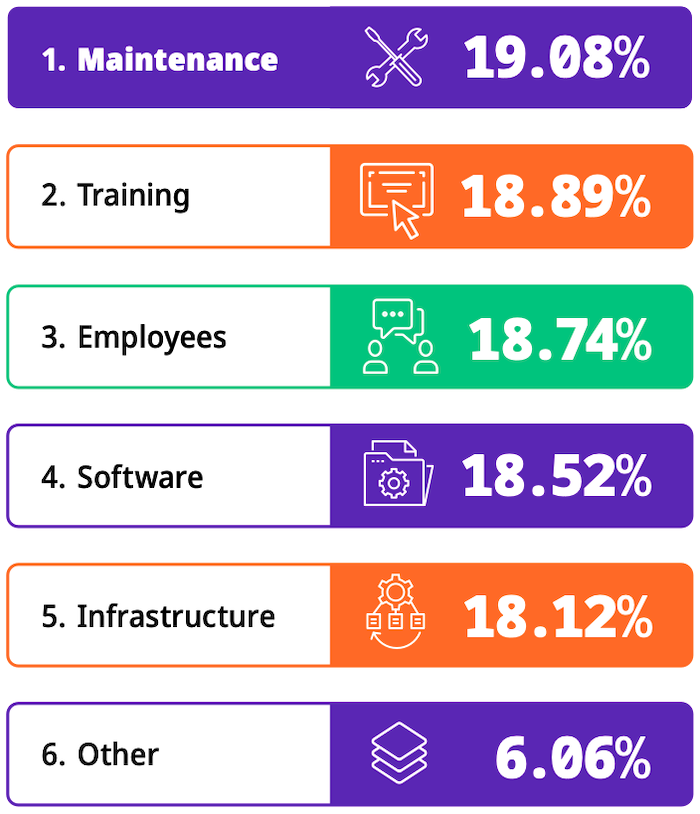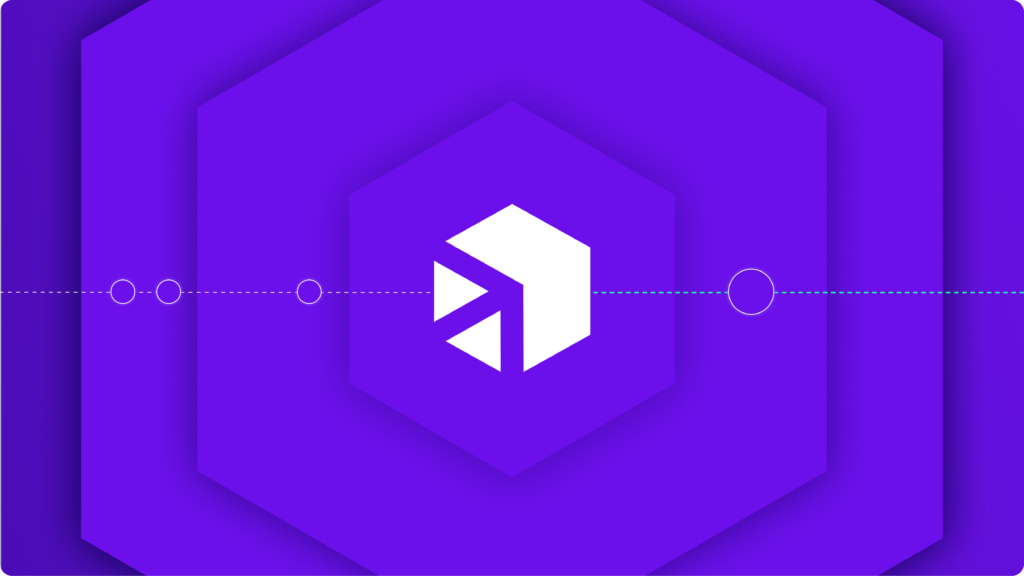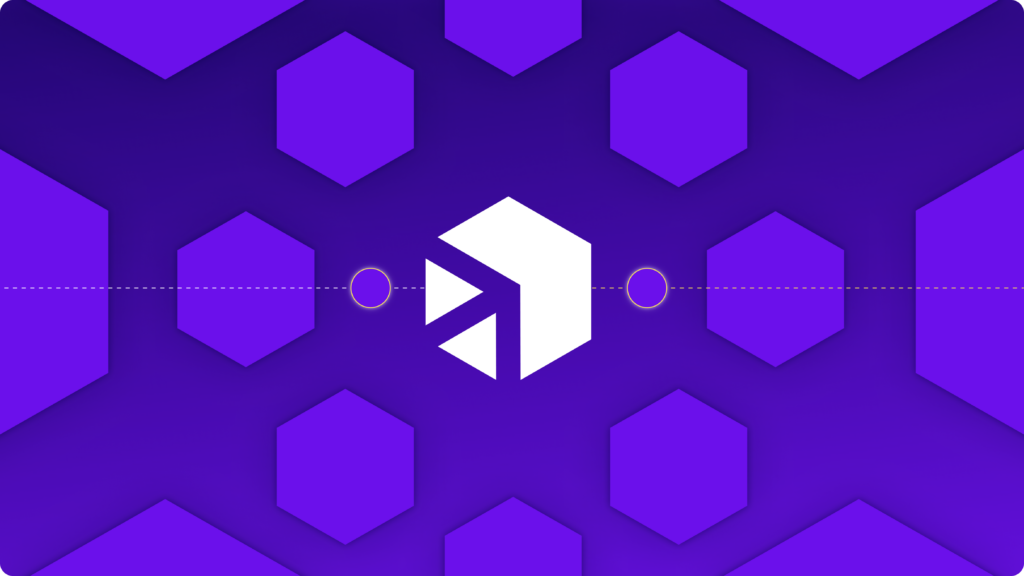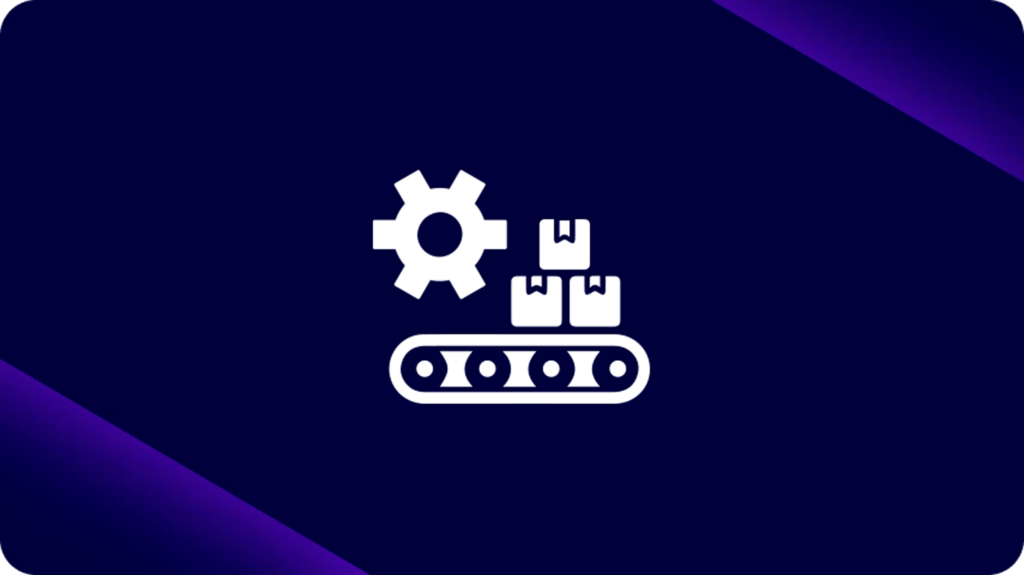setembro 7, 2023
Para muitas empresas, a integração empresarial é um serviço essencial. Confiável para manter os negócios conectados, a tecnologia permite funcionalidades simplificadas em sistemas e processos de TI. Com uma visão geral do negócio em tempo real, as organizações respondem com agilidade às mudanças no mercado enquanto otimizam a eficiência (e a lucratividade).
Mas, como acontece com qualquer solução empresarial, há sempre um ponto de ruptura em que o custo de um produto supera o seu benefício para o negócio. Para muitos clientes da MuleSoft, o investimento contínuo simplesmente para usar o produto está se tornando insustentável, desviando orçamento e recursos de TI de trabalhos de maior valor. Vamos olhar mais de perto.

Custos Associados de Integração
De acordo com o relatório Relatório de integração do estado da empresa Digibee 2023, CIOs, CTOs, arquitetos de sistemas e desenvolvedores web detalharam seus gastos com integração:

Embora os investimentos diretos em produtos, infraestruturas e recursos façam sentido, os itens mais importantes são essencialmente o suporte ao produto, com cerca de 40% dos gastos dedicados à manutenção e formação.
Do ponto de vista da Digibee, este modelo de custo tradicional não faz sentido. Reflete um desequilíbrio crítico entre o que o cliente pagou e o que terá de pagar, com a maior parte do investimento direcionada para manter o produto operacional. Inovação limitada, muito trabalho.
Modelos de custos tradicionais versus modernos
Embora o licenciamento de software seja um item importante em qualquer implantação do MuleSoft, esta postagem se concentra nos custos de manutenção, treinamento e suporte que você deve pagar.
Para saber mais sobre como o modelo de licenciamento legado da MuleSoft se compara ao Digibee, leia este documento técnico.
Manutenção MuleSoft (tradicional)
Quando se trata de manutenção, os clientes da MuleSoft certamente pagam por isso, investindo tempo e recursos significativos para ficarem atualizados sobre todos os diferentes Políticas de manutenção da MuleSoft.
Esse cenário complicado inclui políticas para Mule Runtime (o agente de tempo de execução da plataforma Anypoint™ da MuleSoft), Anypoint Flex Gateway, MuleSoft Robotic Process Automation (RPA), Anypoint Connectors e outros componentes.
Um bom exemplo de ineficiência é o fim de vida complicado (EOL) workflows, impactando os recursos e até mesmo a funcionalidade do produto. Por exemplo, quando uma versão do produto Mule Runtime está sendo encerrada, a falha na atualização no cronograma imposto pela MuleSoft diminui a funcionalidade do produto, desabilitando a capacidade de criar ou reiniciar aplicativos no CloudHub, a plataforma de integração da MuleSoft.
Com poucas opções, os engenheiros e desenvolvedores de software devem abandonar projetos prioritários para se concentrarem em tarefas de EOL de menor valor. Isso é típico de soluções de integração legadas, por isso não é surpresa que a manutenção tenha sido o principal gasto com integração na pesquisa da Digibee.
Manutenção Digibee (moderna)
Gostaríamos de ter mais a dizer aqui, mas é difícil expandir um modelo de manutenção e suporte simples, eficaz e orientado ao cliente.
Com o Digibee, o custo da assinatura do nosso iPaaS hospedado inclui todo o suporte e manutenção, 24 horas por dia, 7 dias por semana, 365 dias por ano, com entrega simplificada de novos recursos e atualizações conforme eles acontecem.
Sempre que você faz login no Digibee, você acessa a versão mais recente e mais capaz da tecnologia. Nenhum relógio EOL está passando, não há necessidade de investir tempo ou recursos adicionais. Com o Digibee, você nunca fica desatualizado.
Treinamento MuleSoft (tradicional)
Se você é cliente da MuleSoft, está familiarizado com o grande (e contínuo) investimento necessário para permitir que seus engenheiros e desenvolvedores de software usem a tecnologia.
Com sete certificações MuleSoft diferentes (cada uma custando até US$ 500), requisitos obrigatórios de recertificação a cada dois anos e compromissos de tempo significativos que afastam os membros da equipe por semanas a fio, o treinamento para MuleSoft é inegavelmente caro.
Mas não é como se você tivesse escolha como deveria ter”contatos designados de suporte ao cliente”em sua equipe. Estes são engenheiros de software e desenvolvedores certificados nos níveis de integração e associado de API (ou mais avançados). Sem eles, o pessoal de suporte da MuleSoft não entrará em contato com você. Na verdade, a MuleSoft especifica quantas pessoas avançadas e certificadas você precisa antes de poder falar com elas, com base no número de núcleos em sua implantação.
Embora possa parecer mais fácil simplesmente contratar pessoas já certificadas na MuleSoft (e ainda pagar pelos ciclos de recertificação), esses recursos são caros. De acordo com Salary.com, a remuneração média anual para desenvolvedores MuleSoft nos EUA é $118,728. Quando você compara isso com o salário médio dos desenvolvedores de software ($76,290), os desenvolvedores certificados pela MuleSoft custam cerca de US$ 42 mil a mais por locação. Se uma empresa optar por contratar 10 desenvolvedores MuleSoft, pagará quase meio milhão de dólares a mais que a média do mercado.
Treinamento Digibee (moderno)
Os clientes da Digibee nunca pagarão para aprender. Em vez disso, oferecemos todo o treinamento gratuitamente. Além disso, é um cenário único.
Com nossa plataforma iPaaS hospedada, nossos clientes não precisam instalar e ser certificados continuamente em novos recursos e versões de produtos. Em vez disso, entregamos nossas inovações mais recentes de maneira integrada, assim que estiverem disponíveis, dentro do iPaaS hospedado pela Digibee. Faça login e você estará lá. Nossa experiência do usuário dinâmica torna mais fácil para qualquer pessoa aprender novos recursos sem ciclos de treinamento caros e demorados.
Suporte MuleSoft (tradicional)
A tecnologia tradicional de integração empresarial existe há anos, assim como seu modelo de suporte. Você conhece qual. Começa no ouro, passa para a platina e, finalmente, para o titânio.
Embora a equipe de suporte da MuleSoft esteja feliz em ser sua amiga, isso tem um custo. Quanto mais você paga, mais amigáveis (e mais acessíveis) eles serão. Isso pode significar 8 horas por dia/5 dias por semana. Ou, se você estiver disposto a pagar muito dinheiro e estiver lidando com uma interrupção do sistema, a equipe de suporte estará disponível para ajudá-lo 24 horas por dia, 7 dias por semana, 365 dias por ano.
No entanto, se o seu incidente for menos urgente, você voltará a trabalhar 8 horas por dia/5 dias por semana. Felizmente, MuleSoft fornece um guia útil onde eles já atribuíram níveis de gravidade aos seus problemas para que você saiba onde está e quando pode esperar uma resposta.
Suporte Digibee (moderno)
Detestamos repetir-nos, mas estamos de volta ao nosso modelo de manutenção e suporte simples, eficaz e orientado para o cliente.
Com o Digibee, o custo da assinatura do nosso iPaaS hospedado inclui todo o suporte e manutenção, 24 horas por dia, 7 dias por semana, 365 dias por ano, com entrega simplificada de novos recursos e atualizações conforme eles acontecem. Independentemente de você estar lidando com uma interrupção do sistema, precisar de uma solução alternativa ou tiver dúvidas sobre uso – estamos aqui para ajudá-lo. Basta deixar-nos uma mensagem ou ligar-nos. A qualquer momento. Realmente.
Próximos passos
Minha esperança é que este blog seja revelador – e afirme coisas que você já sabe sobre a implantação do MuleSoft. Mas todos nós sabemos que a perspectiva de destruir e substituir uma plataforma por outra pode ser mais problemática do que vale a pena. Posso garantir que neste caso a decisão vale a pena, conforme afirmam nossos diversos clientes ex-usuários do MuleSoft.
Mas não acredite apenas na minha palavra, inicie a conversa e descubra por si mesmo. Se você quiser se conectar diretamente, por favor entre em contato conosco. Para se aprofundar nas diferenças entre MuleSoft e Digibee, confira este white paper, MuleSoft vs Digibee: Pessoas, preço e produtividade.
Se você estiver interessado em mais informações sobre a Digibee, visite nosso site or agende uma demonstração. De qualquer forma, boa sorte na sua jornada de integração!









